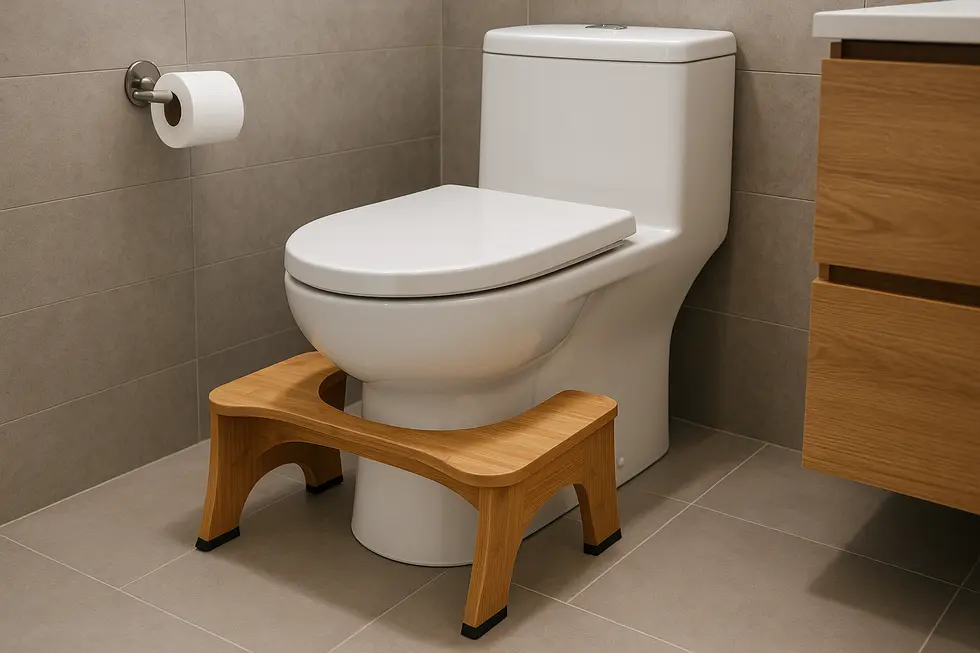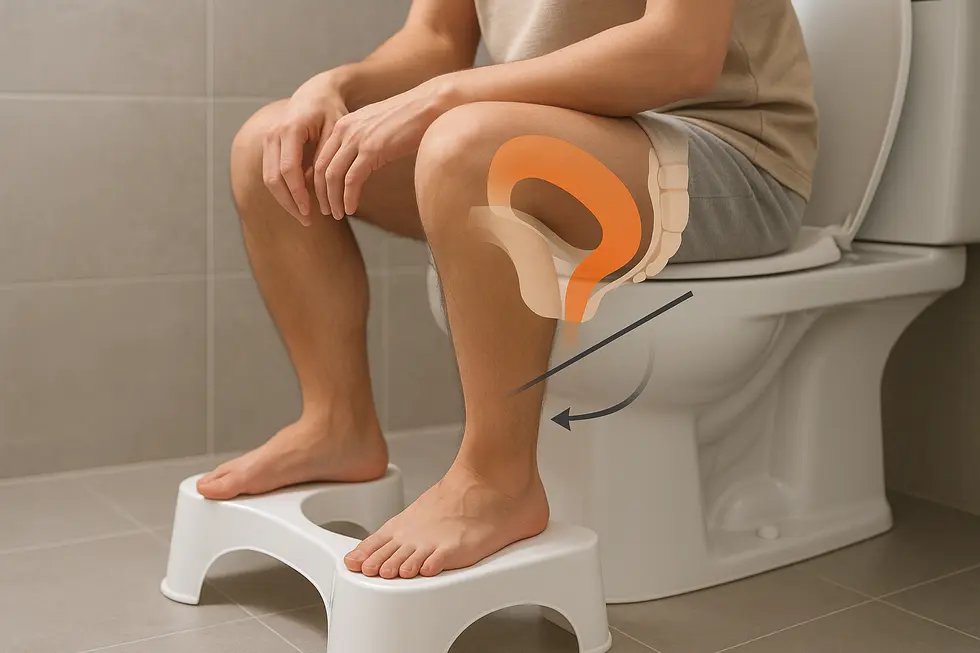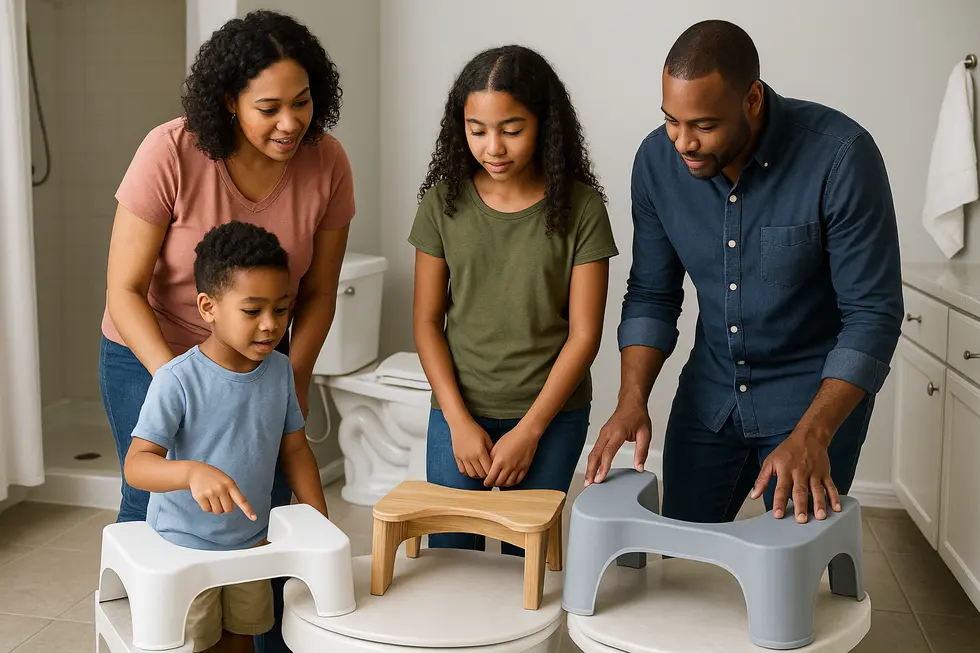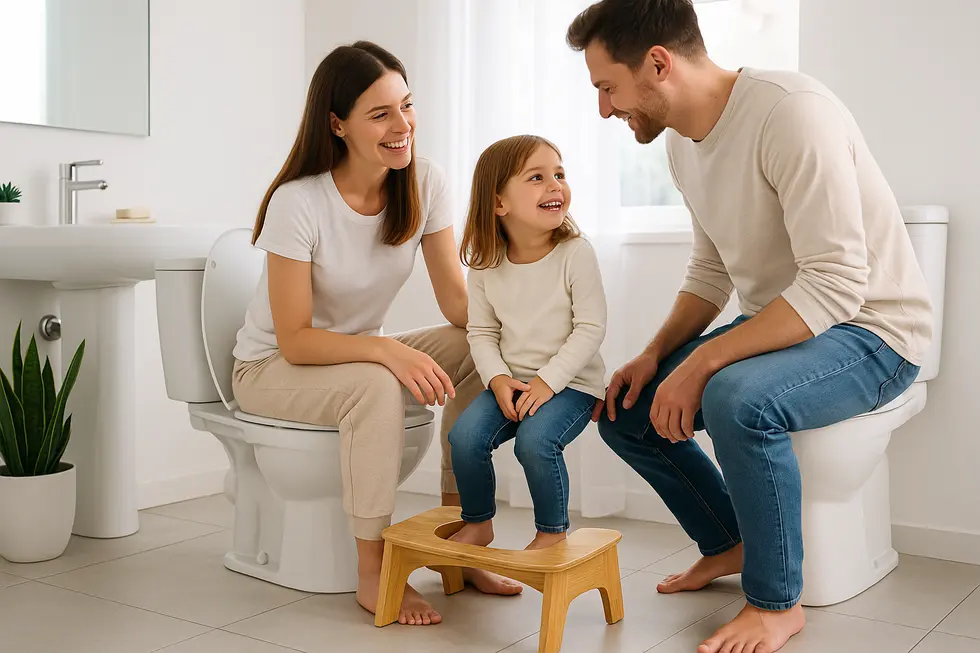Toilet Stools
Elevating Health: Exploring Toilet Stools for Constipation Relief
In recent years, the approach to digestive health has expanded to include ergonomic and lifestyle interventions designed to naturally alleviate constipation. Among these innovations, toilet stools stand out for their simplicity and effective results. They transform a standard bathroom setting into a supportive space for easing bowel movements. This article delves into the technological designs of toilet stools, their health benefits, and how they are being adopted in the market, providing families an accessible means to improve digestive health.
From Simple Footrest to Smart Support: Design Innovations in Toilet Stools for Constipation Relief

The humble footstool that once merely lifted your heels a few centimetres has become a precision instrument for bowel relief. Modern toilet stools are sculpted from anthropometric data to recreate the 35-degree squat while still sliding beneath a Western commode. Contoured platforms cradle the arches, angled decks spare calf muscles, and silicone pads grip slick tiles. Lightweight yet rigid bamboo composites boost sustainability, while ventilation grooves whisk away moisture. Each seemingly minor detail nudges users to strain less, shortening the time stool lingers in the rectum and preventing hard, dry output.
Personalisation now drives the cleverest innovations. Telescopic legs or nesting blocks let each user dial in knee height until hips tip forward. Studies link this fine-tuning to faster transit and less pressure. Analyses show adjustable toilet stools can serve toddlers and tall adults alike, eliminating the need for multiple devices. Some prototypes hide pressure sensors that blink when pelvic floor tension drops, offering biofeedback to people relearning healthy push-patterns. Fold-flat aluminium frames slip into carry-ons, so travel—a common cause of constipation—no longer disrupts routine.
Integration with smart-toilet technology pushes convenience further. Heated seats relax abdominal muscles; quiet fans clear odour and encourage deep, calming breaths. Pulsating bidet streams deliver a warm rinse that stimulates perianal nerves and replaces abrasive wiping, a relief if hemorrhoids accompany constipation. Warm-air dryers then finish the process without paper. Materials keep pace: water-resistant bamboo fibres reduce plastic use, resist mould, and still contour smoothly. This discreet bamboo footstool example illustrates how eco-friendly construction can marry ergonomic shaping. As sensors, materials, and biomechanics converge, the once-overlooked toilet stool is quietly becoming a cornerstone of non-pharmacological constipation care.
How Raising Your Feet Rewires Your Gut: The Science-Backed Benefits of a Toilet Stool for Constipation

The moment you slide a small stool beneath your feet, the modern toilet morphs into a near-perfect squat platform. This deceptively simple change alters the biomechanics of defecation in three decisive ways: it relaxes the puborectalis muscle, straightens the anorectal angle, and curbs the pressure spikes that accompany straining. Together, these adjustments explain why countless constipation sufferers report lighter effort and more complete emptying after adopting a toilet stool.
When seated conventionally, the puborectalis forms a tight sling around the rectum, kinking the passage like a folded garden hose. Elevating the knees above hip level loosens that sling, widening the rectoanal canal so stool meets less resistance. Studies measuring barium flow show the angle opening from roughly 100° in a chair-sitting posture to nearer 126° in a simulated squat. Less resistance means fewer Valsalva maneuvers—forceful pushes that can aggravate hemorrhoids, prolapse, and even cardiovascular stress.
A smoother exit also reduces the time fecal matter lingers in the distal colon. Shorter transit limits excess water absorption, keeping stools moist and pliable. Accordingly, users often notice diminished bloating and that elusive “fully finished” sensation after each visit. For people prone to chronic constipation or irritable bowel syndrome, that incremental gain in evacuation completeness can translate into far fewer flare-ups.
The pelvic floor benefits, too. By dialing back intra-abdominal pressure, a toilet stool protects the muscles that support the bladder, uterus, and rectum. Clinicians increasingly recommend this posture for postpartum recovery and for children learning healthy bowel habits, because early prevention of straining sets the stage for lifelong continence.
Resulting lifestyle improvements rarely require gadgets more complicated than a stable, non-slip platform—but foot height matters. Evidence points toward roughly 20–28 cm as the sweet spot for most adults; experimentation helps fine-tune comfort. For additional positioning tips, explore a detailed posture guide.
By harnessing anatomy rather than medication, the humble toilet stool offers a low-risk, cost-effective strategy to keep bowels moving and pelvic tissues protected—a modern rediscovery of an age-old human posture. (External reference: https://magiccitypt.com/the-importance-of-optimal-toilet-position-for-healthy-bowel-movements/)
From Quirky Footrest to Wellness Essential: Market Adoption and Consumer Appetite for Toilet Stools that Combat Constipation

Five years ago, a foot platform that promised easier bowel movements still felt like a novelty; today it is edging toward mainstream status. Market analysts estimate that the leading manufacturer of toilet stools has surpassed $260 million in lifetime sales, a figure unimaginable when the first prototypes appeared on talk shows and crowdfunding sites. Brick-and-mortar pharmacies now shelve at least one model beside fiber supplements, signaling that retailers view posture-based relief as a legitimate constipation solution rather than an impulse buy.
Driving this surge is a broader health-and-wellness movement that values preventive tools over prescriptions. Consumers who meditate, track sleep, and count macros have discovered that elevating the feet to a roughly 35-degree squat angle can shorten bathroom visits and reduce the fearful “will-it-hurt?” hesitation that often accompanies chronic constipation. Social media has amplified anecdotal wins; videos showing a stopwatch comparison between conventional sitting and semi-squatting routinely rack up millions of views, reinforcing word-of-mouth momentum.
Data culture also plays a role. Apps that log meals, stress levels, and Bristol Stool types encourage users to experiment with posture devices and record the results. Early adopters report not only softer stools but fewer episodes of bloating, which they readily share in online support groups. The transparency normalizes digestive talk and lowers the embarrassment barrier that once stifled product trial.
Design evolution keeps the adoption curve climbing. Lightweight bamboo and recycled polymers appeal to eco-conscious shoppers, while adjustable heights cater to multi-user households. The stool has even entered the “bathroom upgrade bundle” alongside bidet attachments; shoppers weighing whether toilet stools are worth the investment now read side-by-side comparisons of water-cleaning comfort and posture-induced relief (https://pegabidet.com/2025/05/17/are-toilet-stools-worth-it/).
Looking ahead, analysts expect continued growth as employers place wellness furniture in office restrooms and travel versions appear in hotel rooms. The humble toilet stool has shifted from gimmick to evidence-backed accessory, illustrating how a simple change in angle can transform the daily ritual of defecation and offer tangible hope to anyone battling stubborn constipation—an evolution captured in countless clips of relieved grins and relaxed abdomens shared across platforms like these recent consumer reactions on social media (https://www.instagram.com/reel/DLNjbotTeb2/).
Final thoughts
The integration of toilet stools into everyday bathroom routines signifies a promising shift towards natural and ergonomic solutions for digestive health. By adopting this simple yet effective tool, families can experience significant improvements in managing constipation, promoting an overall healthier lifestyle. As awareness and market availability grow, the toilet stool remains a practical choice for those seeking to alleviate and prevent digestive discomfort naturally.
Experience a new standard of clean with PEGABidet—designed for comfort, safety, and independence. Join thousands who trust us to make personal care simple and dignified. Contact us at contact@pegabidet.com
About us
PEGABidet is a brand owned by L.A NEXTGEN LLC, based in California. We design intuitive, hygienic, and accessible bathroom solutions that prioritize safety, dignity, and independence. Our mission is to make personal care effortless and empowering for people at every stage of life.

